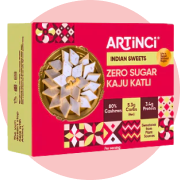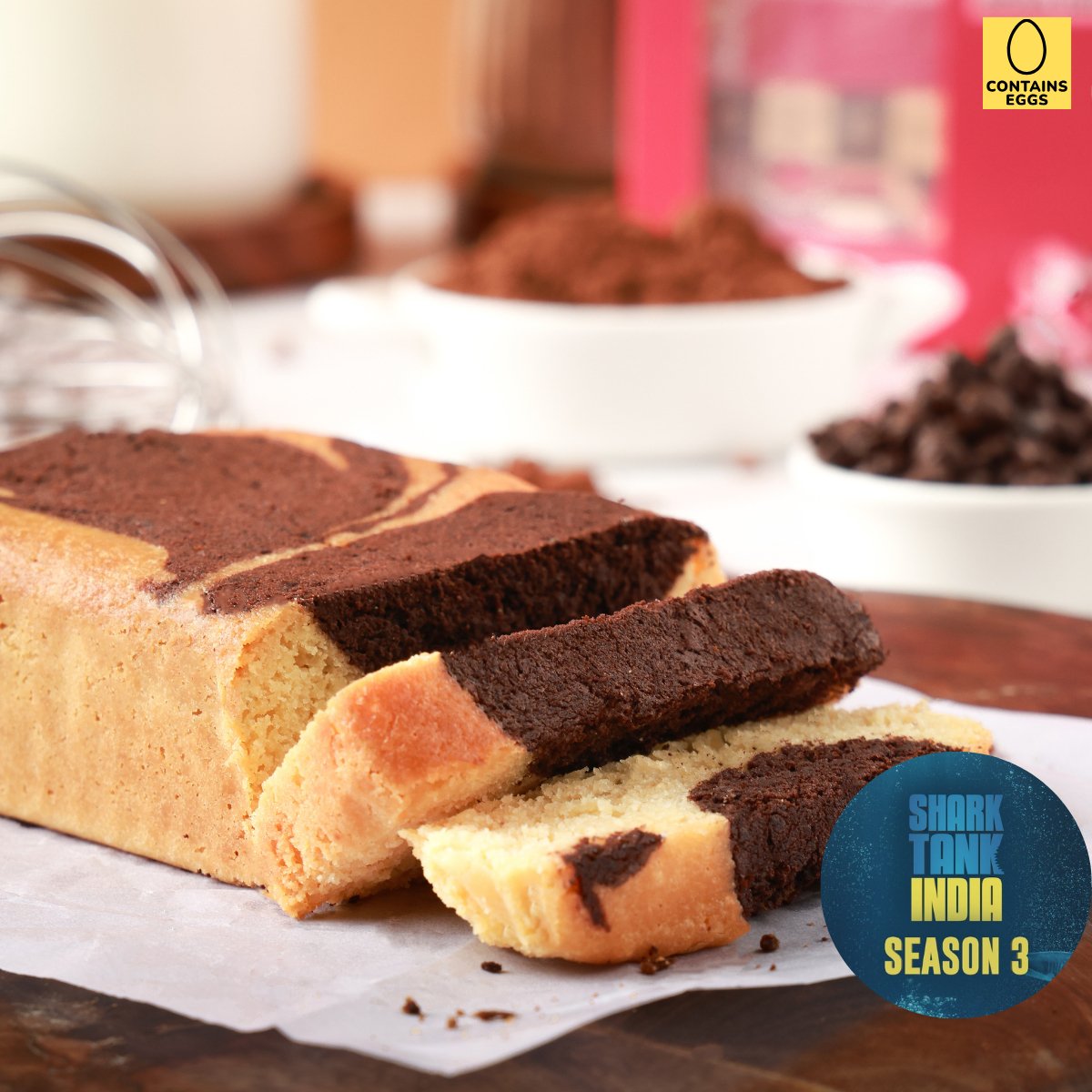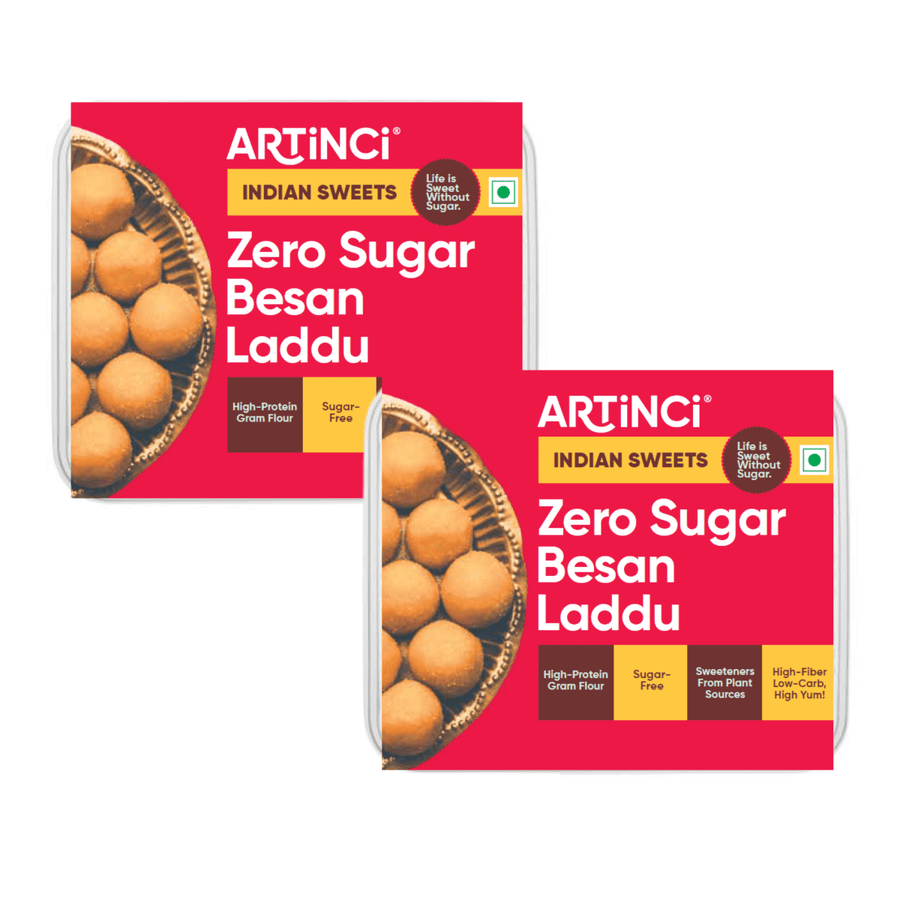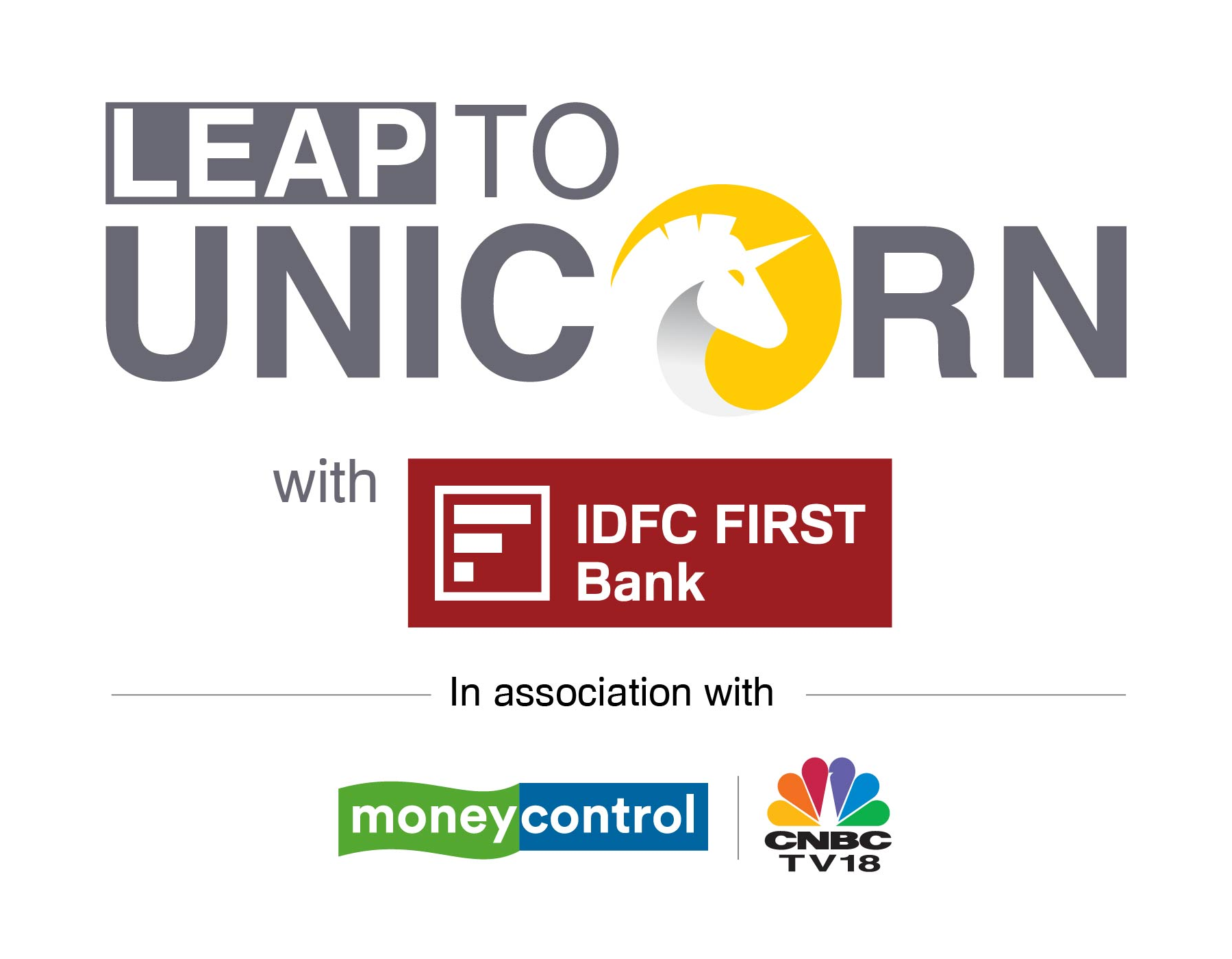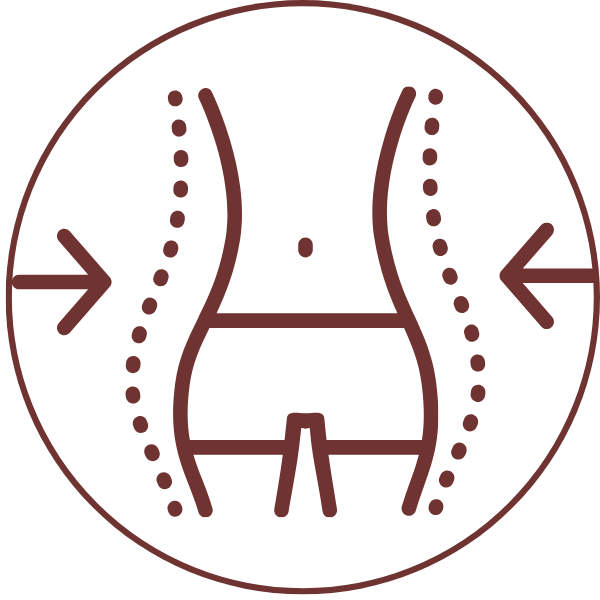Welcome to the world of sugar free joy!
Low Carb Sugar-Free Sweets & Cakes
Artinci was born out of Aarti's and Sumit's (Artinci's founders) abiding love for great-tasting dessert, while helping them stay committed to their health goals as well. As a result, Artinci makes delicious desserts with zero sugar, that are science and evidence-backed.
Aarti and Sumit come from a family of three generations of diabetics. They were themselves diagnosed pre-diabetic in 2012, and right there began a lifelong quest of a healthy, active lifestyle, including healthy swaps in food
Sugar free Sweets & Cakes

Aarti Laxman (Founder)
Artinci is founded by Aarti Laxman, a certified Metabolic coach in the Low-Carb Nutrition & Metabolic Health domain from dLife.in, India’s only legally tenable course in this subject—recognized by the NSDC (under the Ministry of Skill Development & Entrepreneurship, Govt. of India). It’s also internationally accredited by the CPD Standards Office UK, with a global record of 144 CPD hours—the highest for any course of its kind. The accreditation is both nationally valid and globally recognised in over 50+ countries..
Festive Gifting in Artinci
Let customers speak for us
All about Sugar and sugar-free

What Makes a Kitchen Diabetes-Safe? A diabetes-safe kitchen prioritizes low-glycemic index (GI) foods, limits added sugars, and boosts fiber-rich options to stabilize blood sugar. In joint families, stock shared staples like millets (jowar, bajra), whole dals, and non-starchy veggies while hiding high-GI items like white rice or sugary biscuits. Aim for portion control tools (measuring cups) and visible healthy cues like fruit bowls over sweet jars. Essential Pantry Staples Grains: Replace white rice/maida with millets, brown rice, or quinoa; keep oats for upma. Sweeteners: Stevia, monk fruit drops, or erythritol instead of sugar/jaggery; zero-calorie for chai. Spices & Herbs: Cinnamon, fenugreek, turmeric for blood sugar support; stock sugar-free masala chai blends. Oils & Fats: Mustard oil, ghee in moderation; avocado or olive for salads. Snacks: Roasted chana, nuts, seeds; avoid namkeens with hidden sugars. Clear out refined carbs gradually—donate extras to avoid waste and family pushback. Fridge & Family Meal Hacks Stock greens (palak, methi), low-GI fruits (guava, papaya), curd, and eggs for sabzis/omelets. Prep diabetes-friendly batches: millet khichdi, besan cheela, or veggie raita for 4-6 people. Label sections—"Diabetic Zone" for green tea, sprouts; shared for paneer tikka. Involve elders in chopping sessions to build ownership. Category Diabetes-Safe Swap Why It Helps Tea Time Green/herbal chai, skim milk Lowers post-meal spikes Sweets Fruit custard (no sugar) Satisfies without GI surge Rice Dish Millet pulao 30-50% lower GI Snacks Sprouts chaat High fiber, protein boost Family Buy-In Strategies Host a "taste test" dinner with swaps—masala oats vs poha—to win skeptics. Educate via shared quizzes: "Does this raise blood sugar?" Assign roles (kids sort spices, grandparents approve recipes). Track wins: "Family A1C dropped 0.5%!" for motivation. For festivals, prepare kheer with erythritol and nuts. Quick Start Checklist Week 1: Clear sugar shelf, add millets. Week 2: Herbal tea trials, label portions. Ongoing: Weekly veggie hauls, post-meal walks. These changes cut metabolic risks by 30-50% in Indian households. https://pmc.ncbi.nlm.nih.gov/articles/PMC3425027/ https://www.mysugr.com/en/blog/diabetes-support-5-great-topics-sharing https://economictimes.com/industry/healthcare/biotech/healthcare/addressing-metabolic-syndrome-key-to-tackling-type-2-diabetes-in-india/articleshow/116685185.cms https://www.njcmindia.com/index.php/file/article/view/4776

“Type 2 Diabetes and Metabolic Syndrome: Are You at Risk?”
Type 2 diabetes and metabolic syndrome share overlapping risk factors like abdominal obesity and insulin resistance, creating a heightened danger for heart disease in Indians. Recognizing early signs through simple checks can prevent progression. What is Metabolic Syndrome? Metabolic syndrome clusters five key risk factors: central obesity, high blood pressure, elevated fasting glucose, high triglycerides, and low HDL cholesterol. Diagnosis requires central obesity plus two others per IDF criteria (waist ≥90 cm men, ≥80 cm women for South Asians), or three of five per revised NCEP ATP III. In India, prevalence hits 33.5% in urban adults, rising with age and affecting women more (42.3% vs 24.9% in men). Link to Type 2 Diabetes Type 2 diabetes often coexists with metabolic syndrome, amplifying insulin resistance and poor glycemic control. Indians face higher risks due to the "South Asian phenotype"—excess abdominal fat, low muscle mass, and genetic predisposition—fueling 77 million diabetes cases. Those with metabolic syndrome have 4-6 times higher diabetes risk, with hypertriglyceridemia and low HDL as strong predictors. Indian Risk Factors Urbanization drives risks: refined carbs, sedentary jobs, low fruit intake, and middle/high socioeconomic status boost odds 2-5 times. Women, those over 45, obese individuals, and smokers face elevated threats; fast food and short sleep worsen it. Genetic factors plus high sugar in chai/snacks compound the issue in Haryana and beyond. Self-Risk Assessment Quiz Risk Factor Your Status? Points Waist size Men ≥90cm / Women ≥80cm 2 pts BP ≥130/85 mmHg 1 pt Triglycerides ≥150 mg/dL 1 pt HDL Men <40 / Women <50 mg/dL 1 pt Fasting glucose ≥100 mg/dL 1 pt Age ≥45 years 1 pt Family history diabetes Yes 1 pt Score 3+? High risk—consult a doctor. Tailored for Indians; measure waist at navel. Prevention Strategies Lifestyle changes cut risk: 30-min post-meal walks, millets over rice, and more fruits/veggies. Swap sugary chai for green tea or herbal (cinnamon/fenugreek); aim 5-7% weight loss. Yoga/pranayama helps stress; monitor BP yearly. Studies show these reverse prediabetes in Indians. Start today for metabolic flexibility. https://pmc.ncbi.nlm.nih.gov/articles/PMC11683495/ https://www.njcmindia.com/index.php/file/article/view/4776 https://www.sciencedirect.com/science/article/abs/pii/S1871402118304211
Prebiotics and Diabetes: How FOS Can Support Gut Health, Lipids, and Glucose Homeostasis.
Introduction With over 100 million diabetics in India, gut health emerges as a critical factor in metabolic control. FOS, found in onions, garlic, and bananas, acts as a prebiotic by selectively feeding beneficial bacteria like Bifidobacterium, producing short-chain fatty acids (SCFAs) that regulate glucose and inflammation. Recent studies highlight its potential to address dysbiosis-linked insulin resistance without raising blood sugar. Gut Health Mechanisms FOS ferments in the colon to increase SCFAs like butyrate, which strengthen the gut barrier, reduce endotoxemia, and suppress hepatic glucose output. This modulation boosts Akkermansia and Bifidobacterium populations, correlating with 15-20% better insulin sensitivity over 8 weeks in type 2 patients. Enhanced microbiota diversity also eases IBS symptoms common in diabetics. Benefits for Lipids and Glucose Clinical trials show 8-10g daily FOS reduces fasting insulin, HbA1c, and LDL cholesterol while improving HOMA-IR scores, especially when paired with polyphenols. It promotes GLP-1 secretion, aiding satiety and beta-cell function without converting to glucose, making it ideal for prediabetes prevention. Indian Context and Dosage Incorporate FOS via everyday foo ds: 100g onions (5g FOS), garlic, or bananas. Supplements (5-10g/day) suit higher needs; start low to avoid bloating. India's growing prebiotic market offers powders blending FOS with stevia for diabetes-friendly sweets. Practical Tips and Recipes Morning smoothie: Blend banana, yogurt, and 5g FOS powder for gut-boosting breakfast. Dal enhancer: Add garlic-onion tadka with extra FOS sprinkle for fiber-rich meals. Post-meal dose: 5g FOS in warm water aids digestion and glucose stability. Consult doctors, especially with metformin, and pair with millets for synergy.(see the generated image above) Potential Limitations High doses (>15g) may impair glucose in some, per short-term studies; effects vary by microbiota baseline. Moderate intake ensures benefits without GI upset. https://www.frontiersin.org/journals/nutrition/articles/10.3389/fnut.2022.1058910/full https://pmc.ncbi.nlm.nih.gov/articles/PMC11510484/ https://www.imarcgroup.com/india-stevia-market https://www.nature.com/articles/s41598-017-10722-2

सुगर से स्टेविया तक: कैसे नेचुरल स्वीटनर्स भारत में डायबिटीज को मैनेज करने में मदद कर रहे हैं।
परिचय भारत में 10 करोड़ से ज्यादा लोग डायबिटीज से जूझ रहे हैं, जहां चीनी का सेवन ब्लड शुगर को तेजी से बढ़ा देता है। स्टेविया जैसी नेचुरल जीरो-कैलोरी स्वीटनर पत्तियों से बनी होती है और ब्लड ग्लूकोज नहीं बढ़ाती, जबकि FOS प्रीबायोटिक फाइबर गट बैक्टीरिया को मजबूत बनाता है। ये स्वीटनर्स भारतीय मार्केट में तेजी से पॉपुलर हो रहे हैं, खासकर 2025 के हेल्थ ट्रेंड्स में। डायबिटीज के लिए फायदे स्टेविया HbA1c लेवल को कम करती है और इंसुलिन सेंसिटिविटी बढ़ाती है, जैसा मेटा-एनालिसिस में साबित हुआ। FOS गट हेल्थ सुधारता है, लिपिड प्रोफाइल बैलेंस करता है और कब्ज जैसी प्रॉब्लम्स दूर करता है बिना ग्लूकोज में कन्वर्ट हुए। साथ में ये क्रेविंग्स कम करते हैं और वेट मैनेजमेंट में मददगार साबित होते हैं, जो 77 मिलियन प्री-डायबिटिक्स के लिए परफेक्ट है। भारतीय मार्केट ट्रेंड्स भारत का स्टेविया मार्केट 2035 तक तेज ग्रोथ करेगा, FOS ब्लेंडेड प्रोडक्ट्स जैसे शुगर-फ्री मिठाई और चाय मिल्स की डिमांड बढ़ रही है। अमेज़न और लोकल ब्रांड्स पर पाउडर, ड्रॉप्स उपलब्ध हैं, जो मिलेट्स और वेजी डाइट के साथ फिट बैठते हैं। 2026 तक स्टेविया-FOS लड्डू और खीर जैसे लोकल ऑप्शन्स और बढ़ेंगे। प्रैक्टिकल टिप्स और रेसिपीज दैनिक चाय: 1/4 चम्मच स्टेविया-FOS ब्लेंड से चाय मीठी और गट-फ्रेंडली बनाएं, जीरो ग्लाइसेमिक इंपैक्ट। शुगर-फ्री खीर: बादाम मिल्क में स्टेविया ड्रॉप्स और 2 चम्मच FOS मिलाकर सबुदाना खीर बनाएं—त्योहारों के लिए आइडियल। रोटी एन्हांसर: घी वाली रोटी पर FOS-स्टेविया स्प्रिंकल करें स्वादिष्ट फ्लेवर के लिए। डॉक्टर से डोज चेक करें, खासकर मेटफॉर्मिन लेने वालों के लिए। सावधानियां और चुनौतियां स्टेविया का कड़वा आफ्टरटेस्ट रेबौडियोसाइड A से कम होता है, FOS ज्यादा लेने से ब्लोटिंग हो सकती है—5-10g तक सीमित रखें। ऑर्गेनिक इंडियन ब्रांड्स चुनें और लो-GI डाइट जैसे बाजरा-सब्जी के साथ यूज करें। https://www.imarcgroup.com/india-stevia-market https://pmc.ncbi.nlm.nih.gov/articles/PMC7103435/ https://www.coherentmarketinsights.com/market-insight/stevia-market-2082 https://www.webmd.com/food-recipes/what-is-stevia









